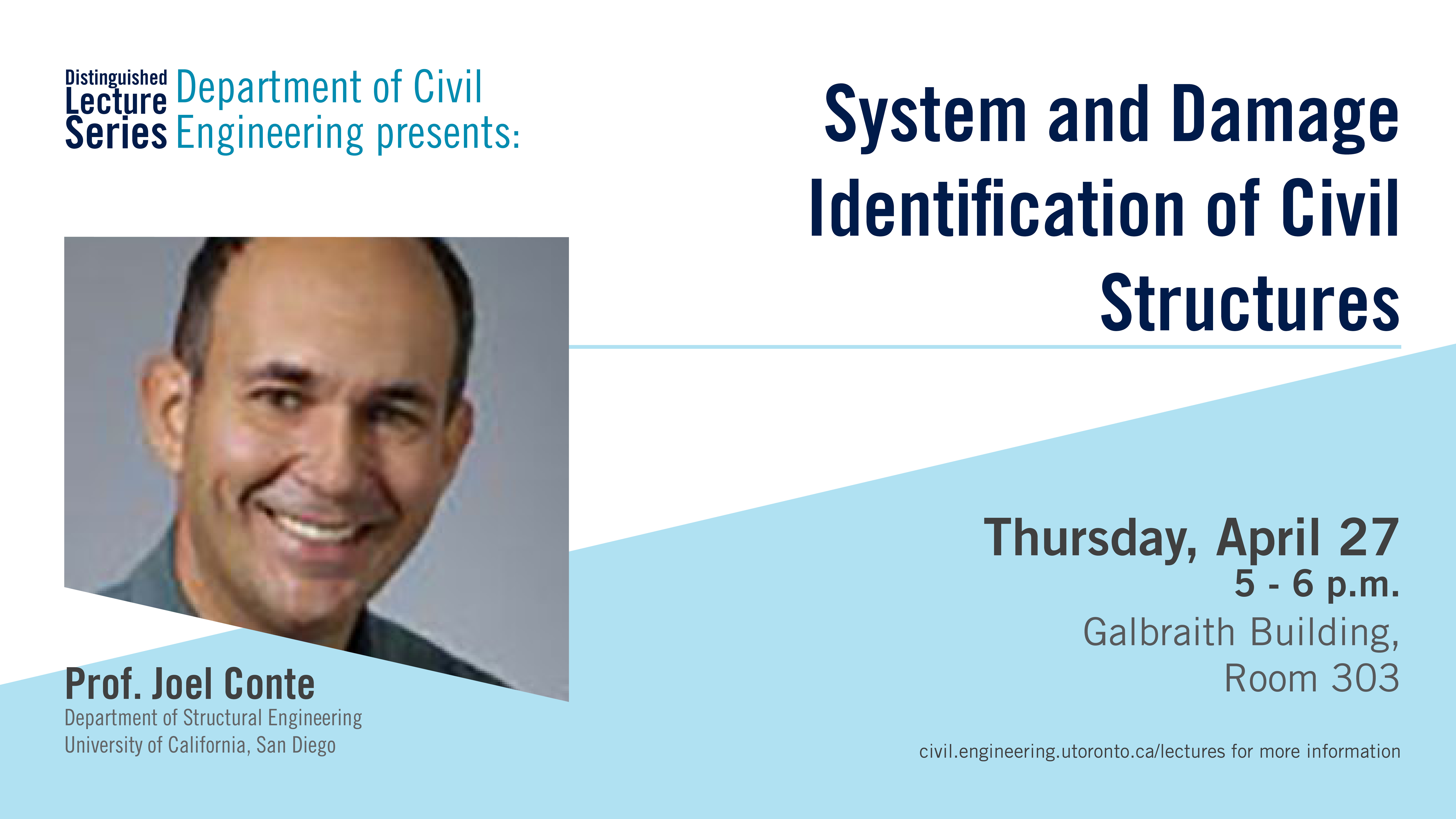
- This event has passed.
Distinguished Lecture | Joel Conte

System and Damage Identification of Civil Structures
 Abstract: The first part of the presentation will focus on vibration-based linear system and damage identification methods as applied to full-scale reinforced concrete building specimens, with realistic design details, tested on the large outdoor shake table at the University of California, San Diego. Linear system and damage identification methods are applied to low amplitude vibration data obtained before and after a potentially damaging seismic event and for increasing levels of damage. The linear damage identification method used consists of linear finite element (FE) model updating, in which damage is defined as local loss(es) of effective stiffness within the structure. The following issues will be discussed: (1) variability of the modal identification results with respect to the system identification methods used, (2) sensitivity of the modal identification results to the amplitude of the structural dynamic response and to the magnitude of the structural damage, (3) comparison of the damage identification results obtained from a deterministic versus probabilistic (Bayesian) linear FE model updating approach, and (4) the need for a more realistic and more comprehensive definition of structural damage.
Abstract: The first part of the presentation will focus on vibration-based linear system and damage identification methods as applied to full-scale reinforced concrete building specimens, with realistic design details, tested on the large outdoor shake table at the University of California, San Diego. Linear system and damage identification methods are applied to low amplitude vibration data obtained before and after a potentially damaging seismic event and for increasing levels of damage. The linear damage identification method used consists of linear finite element (FE) model updating, in which damage is defined as local loss(es) of effective stiffness within the structure. The following issues will be discussed: (1) variability of the modal identification results with respect to the system identification methods used, (2) sensitivity of the modal identification results to the amplitude of the structural dynamic response and to the magnitude of the structural damage, (3) comparison of the damage identification results obtained from a deterministic versus probabilistic (Bayesian) linear FE model updating approach, and (4) the need for a more realistic and more comprehensive definition of structural damage.
The second part of the presentation will focus on a proposed framework for parameter identification of mechanics-based nonlinear finite element models of civil structures, from input-output or output-only seismic data, using batch and recursive Bayesian estimation methods. The updated nonlinear FE model of the structure of interest can then be used to identify damage (i.e., losses in stiffness, strength, ductility capacity, …) in the structure after a potentially damaging seismic event. Issues of model identifiability will also be discussed by introducing a statistical metric to quantify the information contained in every individual measurement channel about every individual model parameter to be estimated. Structural response data numerically simulated from a realistic mechanics-based nonlinear FE model of a three-dimensional reinforced concrete frame building with unknown material constitutive model parameters and subjected to known and/or unknown seismic excitation are used to illustrate the performance of the proposed framework.
Joel Conte
Department of Structural Engineering
University of California, San Diego
Register to attend
[Form id=”39″]
[Form id=”39″ type=”submission” startdate=”” enddate=”” submit_date=”1″ submitter_ip=”0″ username=”0″ useremail=”0″ form_fields=”1″ show=”1,1,1,1,1,1,0,0,1,0″]